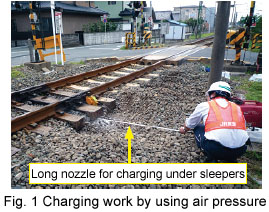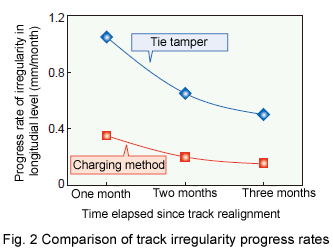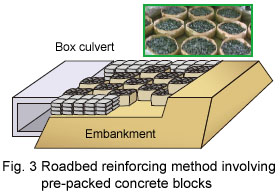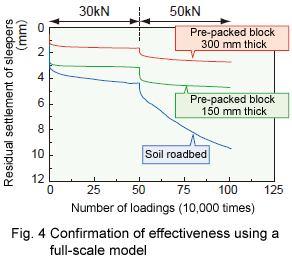On ballasted track where ballast renewal has not been performed for a long period of time, the mixing ratio of mud or sand may be high. In such cases, re-alignment of the track using the tie tamper method is not effective. Accordingly, the RTRI developed a water glass/polymer gel charging method as a simple technique to repair loose sleepers on low-grade lines. This is a method of treating loose sleepers involving the formation of composite gel by using air pressure to charge particulate filler in which water glass is formulated under the sleepers (Fig. 1), and subsequently injecting a biodegradable polymer aqueous solution that has a small environmental load. The technique eliminates the need for ballast renewal, and can be implemented if a train interval of over roughly ten minutes is available. When the method was applied in a site test, the progress rate of track irregularity was reduced to about 1/3 compared to track repair using tie tampers (Fig. 2).
In connections between concrete structures such as box culverts, abutments etc. and earth structures, track settlement is likely to occur, which represents a weak area in terms of maintenance. The RTRI therefore developed a roadbed reinforcing method using pre-packed concrete blocks as a way of building roadbeds that enable execution within a short period of time, have a high level of rigidity, and suppress track settlement on structure boundary. The technique involves removing ballast, excavating the roadbed, installing rectangular bags containing ballast, introducing more ballast between the rectangular bags (Fig. 3), and applying ultra high-early strength mortar (Fig. 3). The RTRI confirmed the method’s effectiveness in suppressing track settlement on the structure boundary through a cyclic loading test using a full-scale model (Fig. 4).
|







